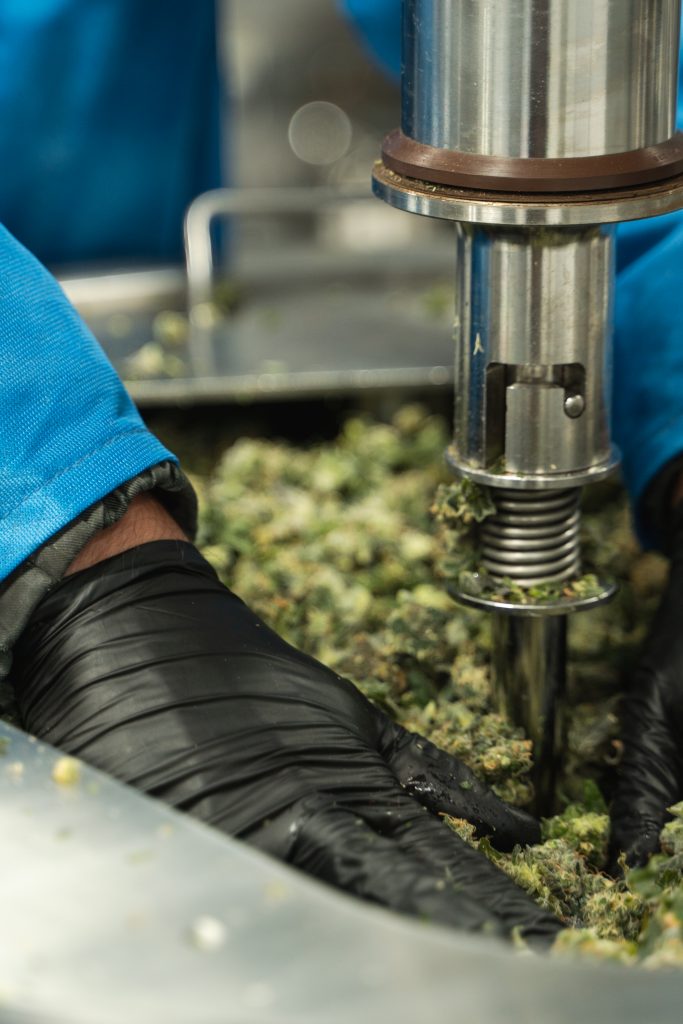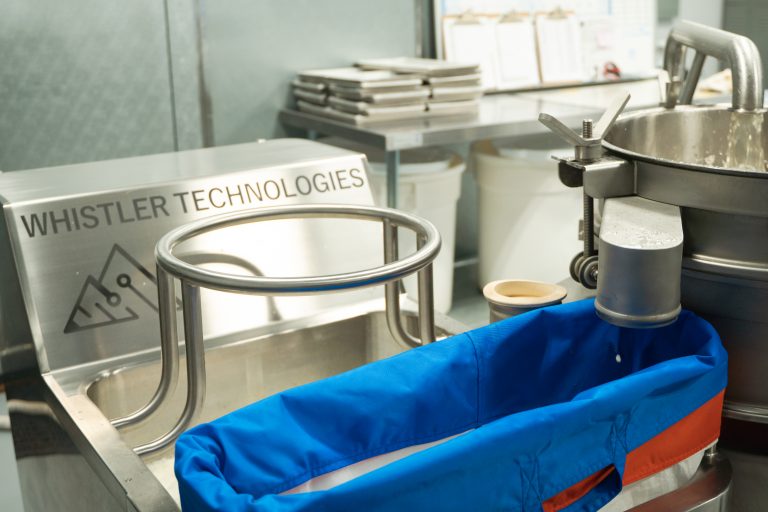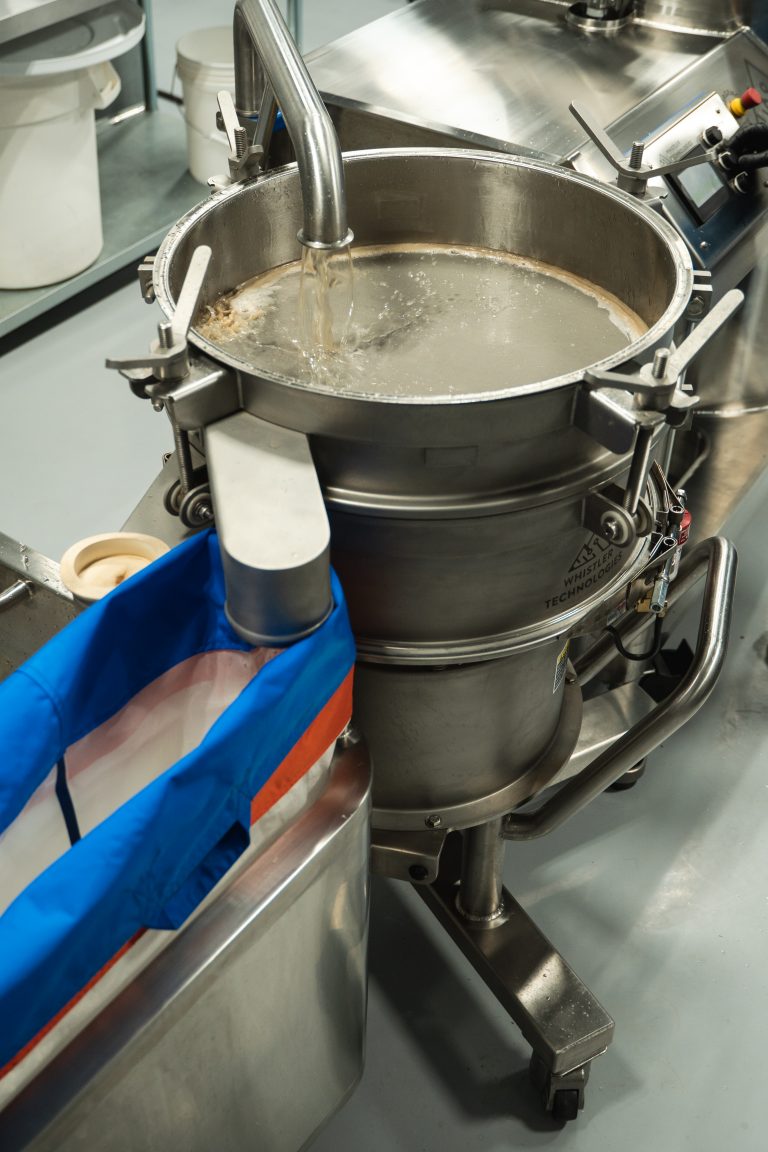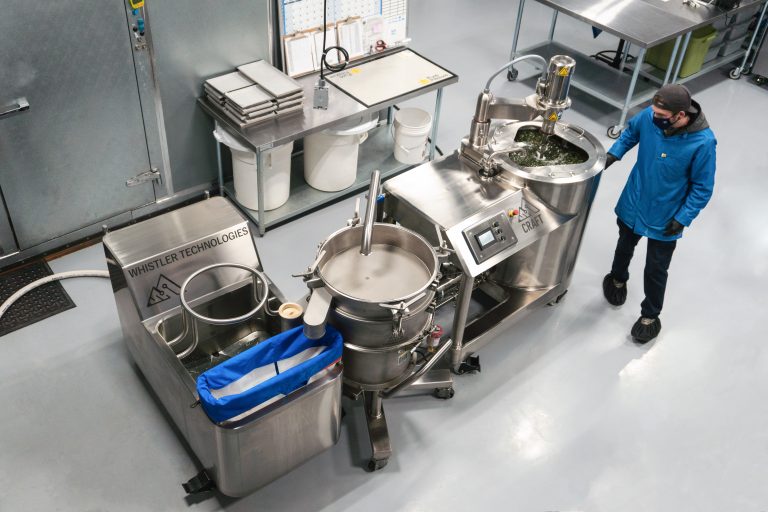At Whistler Technologies, we continuously innovate solventless extraction processes.
The cannabis industry is rapidly evolving. As a result, equipment plays a vital role in determining a business’ success. Ensuring you have a cost-effective solution to scale when the time comes is critical.

One way to scale a process is to eliminate or reduce machine downtime. For this reason, we design our equipment to feature what we call a continuous flow operation.
In this post, the engineering team breaks down the downfalls of a traditional run and dump solventless extraction cycle. Then, they explain how continuous flow improves yields, timing, and quality.
Run and Dump
The typical ice water extraction process uses what we call a run and dump procedure.
To begin, the hashmaker agitates their biomass for a set time (2-20 minutes or more), in an agitator or hand stirred in a vessel. Once the agitation cycle has completed, the trichomes settle to the bottom of the agitation tank.
After the trichomes have settled, the hashmaker will drain the agitation water into a collection vessel, lined with micron filter bags. Once the water fully drains, it is time to begin the collection process.
The collection process involves removing the filter bags, rinsing the trichomes, then scooping them onto a tray for drying. Then, the water is added back to the agitator and drained again. This is done to salvage any trichomes that were caught in the plant material as it was drained. This can be repeated a few times during every cycle.
The hashmaker may repeat this entire process 4+ times, to achieve a full extraction on the material.
Efficiency
The first issue with the run and dump process, is that some trichomes may get caught in the biomass as they are settling to the bottom of the tank.
The hashmaker can rinse the biomass before pulling the bags, but this will introduce more water into the process. Excess water makes the extraction process more laborious and time-consuming.
If the rinsing water is not chilled, trichomes become sticky. This results in trichomes not being properly filtered away from contaminants. In some cases, filtered agitation water could be recycled through the system for rinsing. However, this extends the time required to complete the extraction cycle.
On the other hand, if these trichomes remain in the biomass, they will have to go through another agitation cycle before they end up in collection bags.
Exposure
The run and dump process exposes trichomes to harsh conditions throughout the entire agitation cycle, or multiple cycles.
While trichomes are separated from the biomass, they are still getting mixed and agitated with the biomass. As a result, trichomes have the potential to be damaged. Similarly, they can also get caught back in the biomass during draining.
Trichomes stay in the process water for the entirety of the run, so they are exposed to water soluble contaminants and chlorophyll. This can alter the flavour of a trichome. As a result, there is a reduction in yields. Further, there is a decrease in the quality of the final solventless product output.
Downtime
A third issue the run and dump method presents is increased processing downtime during collection. Since the agitation water must be filtered before being returned to the agitation tank, the operator cannot agitate and filter simultaneously. As a result, the time required to process a batch increases. Therefore, the overall throughput for the day is reduced.
Intensive Labour
Finally, if you are washing a high-yielding strain, you may need to agitate your bags during draining. This is done to allow the agitation water to flow through the micron bags, since hash clogs the bags. This process is labour-intensive, and eventually causes strain to the operator’s body.
Lifting water back into the tank for the rinse, or even using a return pump, will require the operator to do labour-intensive bag pulling multiple times per agitation cycle.
A tired hashmaker is not an efficient hashmaker!
Continuous Flow and Solventless Exraction
Whistler Technologies designs systems that treat trichomes with care. Our innovative systems improve process timing, while increasing the amount of material that can be processed in a single shift. This is made possible with continuous flow.
The magic of our continuous flow systems can be attributed to the agitator false bottom, custom vibratory separator, and catchment tank.
The false bottom is a custom made 220 micron stainless steel mesh screen. It can also be customized to suit your operation. This allows material to separate from the biomass in the agitator, and settle in the cone bottom.
The catchment tank holds 20-gallon micron filter bags. It also features a false bucket ring for collecting and rinsing trichomes. Most importantly, it recirculates water back to the agitation tank.

The vibratory separator performs an initial separation of trichomes and water. Trichomes are deposited into the collection bags, which are partially submerged in water. The bulk of the water is dropped into the catchment tank.

The dewatering operation is performed by the vibratory separator. It allows us to continuously cycle water back to the agitation tank, while the drain pump operates. Since the water level of the agitation essentially never changes, the hashmaker can drain and agitate simultaneously. That simultaneous agitation and drain operation is what we call continuous flow.
The Benefits of Continuous Flow
Continuous flow is a significant improvement from the run and dump method. It allows the operator to constantly filter the agitation water. This means that the trichomes have less exposure to rough agitation conditions. Consequently, there is less risk of trichomes getting stuck in the biomass. As a result, this can improve yield efficiency.
The hashmaker can also process more effectively. When the operator pulls the bags, all the trichomes that were separated during agitation will be captured. This means you can remove your trichomes from the operation for collection at any time, which reduces the exposure time to water. Further, continuous flow also reduces downtime in the process. This means hashmakers can process more material in a single shift.

We take great pride in our continuous flow system design. It is a no-brainer to set up this kind of system in any solventless processing lab.
Our continuous flow system is best partnered with our state-of-the-art agitators, but it is also compatible with other agitation systems. Interested in improving your solventless operations? Reach out to our knowledgeable team.